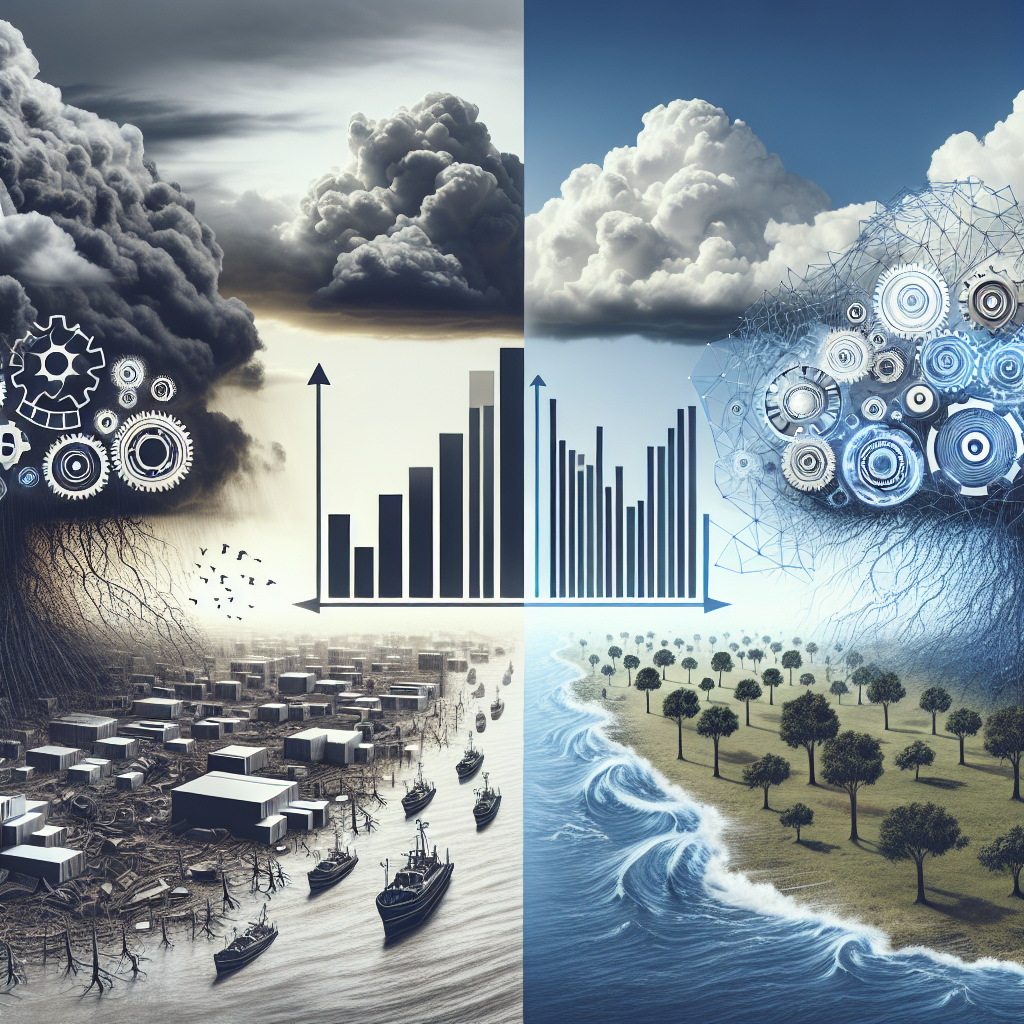Natural disasters such as hurricanes, earthquakes, and wildfires can have devastating effects on communities around the world. In recent years, advancements in technology have made it possible to predict these events with greater accuracy, allowing for better preparation and response efforts. Two technologies that have been at the forefront of this progress are Artificial Intelligence (AI) and Machine Learning (ML). Both AI and ML have the potential to analyze vast amounts of data and provide valuable insights that can help predict natural disasters. But which technology is more effective at predicting these events? In this article, we will explore the differences between AI and ML and discuss their respective strengths and weaknesses in the context of natural disaster prediction.
Artificial Intelligence (AI) is a broad field of computer science that focuses on creating intelligent machines that can perform tasks that typically require human intelligence. AI systems can learn from experience, adjust to new inputs, and perform tasks that are traditionally done by humans. Machine Learning (ML) is a subset of AI that uses algorithms to analyze and interpret data, allowing computers to learn and improve from experience without being explicitly programmed.
When it comes to predicting natural disasters, both AI and ML can be valuable tools. AI can be used to analyze complex data sets and identify patterns that may indicate an impending natural disaster. For example, AI algorithms can analyze weather patterns, seismic activity, and other environmental factors to predict the likelihood of a hurricane or earthquake. ML, on the other hand, can be used to train models on historical data to predict future events. ML algorithms can analyze past natural disasters and their effects to forecast the likelihood and impact of future events.
One of the key differences between AI and ML is the level of human intervention required. AI systems are typically more autonomous and can make decisions without human input. ML, on the other hand, requires human oversight to train and fine-tune models. This can make AI more efficient in some cases, as it can quickly process large amounts of data and make predictions in real-time. However, ML may be more accurate in certain situations, as humans can provide expertise and context that AI systems may lack.
In the context of natural disaster prediction, both AI and ML have their strengths and weaknesses. AI systems can analyze vast amounts of data from various sources to make predictions quickly and efficiently. For example, AI can analyze satellite imagery, social media posts, and sensor data to detect early warning signs of a natural disaster. AI can also be used to develop predictive models that can forecast the path and intensity of a hurricane or earthquake.
On the other hand, ML can be more accurate in predicting natural disasters, as it can learn from historical data and identify patterns that may not be immediately apparent to humans. ML algorithms can be trained on past natural disasters to predict the likelihood and impact of future events. This can be especially useful in predicting rare or unusual events that may not have occurred in the past.
In summary, both AI and ML are valuable tools in predicting natural disasters. AI can quickly analyze vast amounts of data to make predictions in real-time, while ML can be more accurate in forecasting future events based on historical data. Ultimately, the effectiveness of each technology will depend on the specific circumstances and the availability of data. By combining the strengths of both AI and ML, researchers and organizations can improve their ability to predict and prepare for natural disasters.
FAQs:
Q: Can AI predict natural disasters with 100% accuracy?
A: While AI can analyze vast amounts of data to make predictions, it is unlikely to achieve 100% accuracy in predicting natural disasters. Natural disasters are complex and can be influenced by a wide range of factors that may not be fully understood or predictable.
Q: How can ML be used to predict natural disasters?
A: ML can be used to train models on historical data to predict future natural disasters. By analyzing past events and their effects, ML algorithms can forecast the likelihood and impact of future events.
Q: Which technology is more cost-effective for predicting natural disasters?
A: The cost-effectiveness of AI and ML for predicting natural disasters will depend on the specific circumstances and the availability of data. AI may be more efficient in processing large amounts of data in real-time, while ML may be more accurate in predicting future events based on historical data.
Q: How can AI and ML be combined to improve natural disaster prediction?
A: By combining the strengths of both AI and ML, researchers and organizations can improve their ability to predict and prepare for natural disasters. AI can quickly analyze data to make real-time predictions, while ML can provide more accurate forecasts based on historical data.
Q: What are some challenges in using AI and ML for predicting natural disasters?
A: Some challenges in using AI and ML for predicting natural disasters include the complexity of natural events, the availability of data, and the need for human oversight and expertise in training and fine-tuning models. Additionally, ethical considerations and privacy concerns may arise in collecting and analyzing data for prediction purposes.

